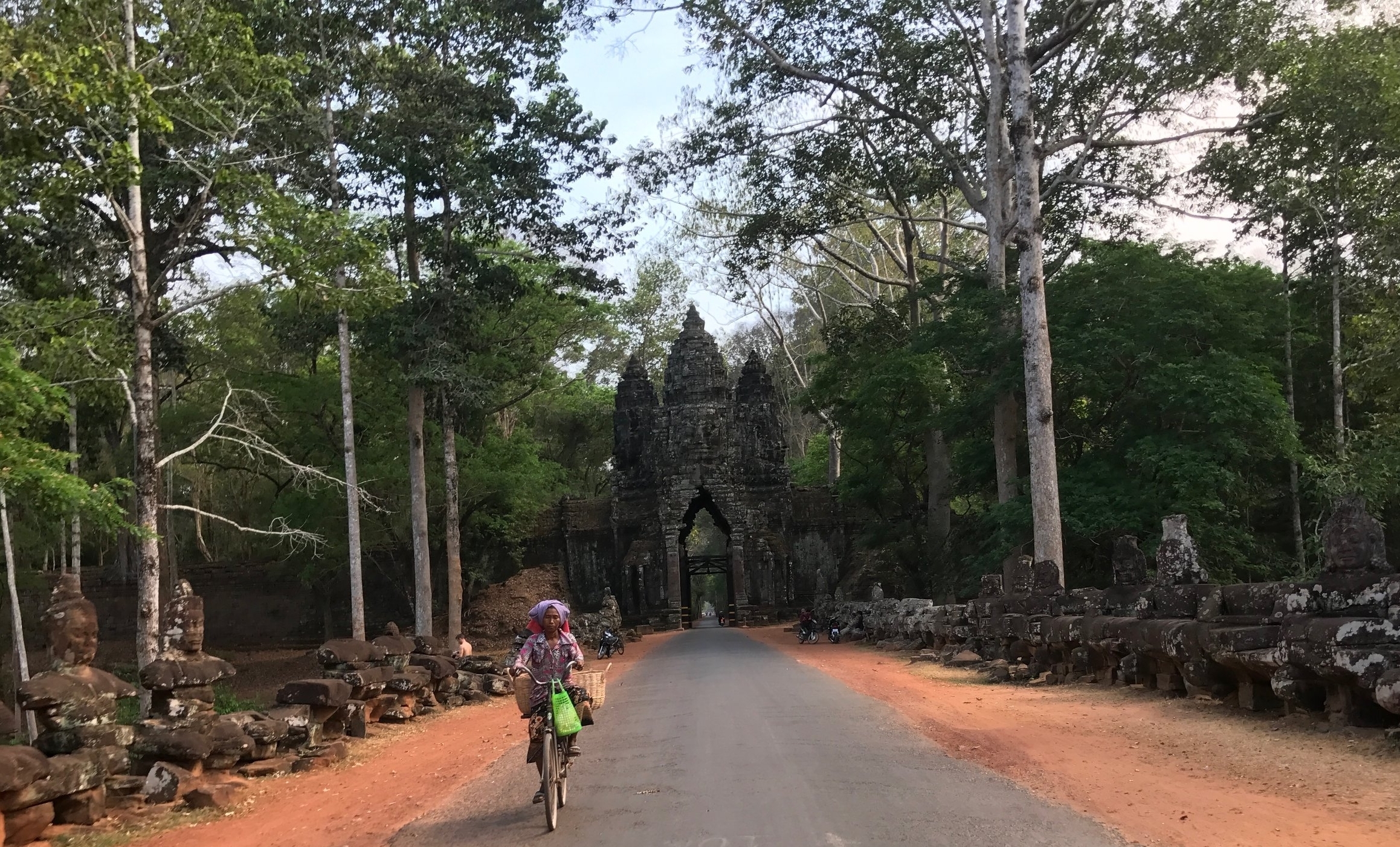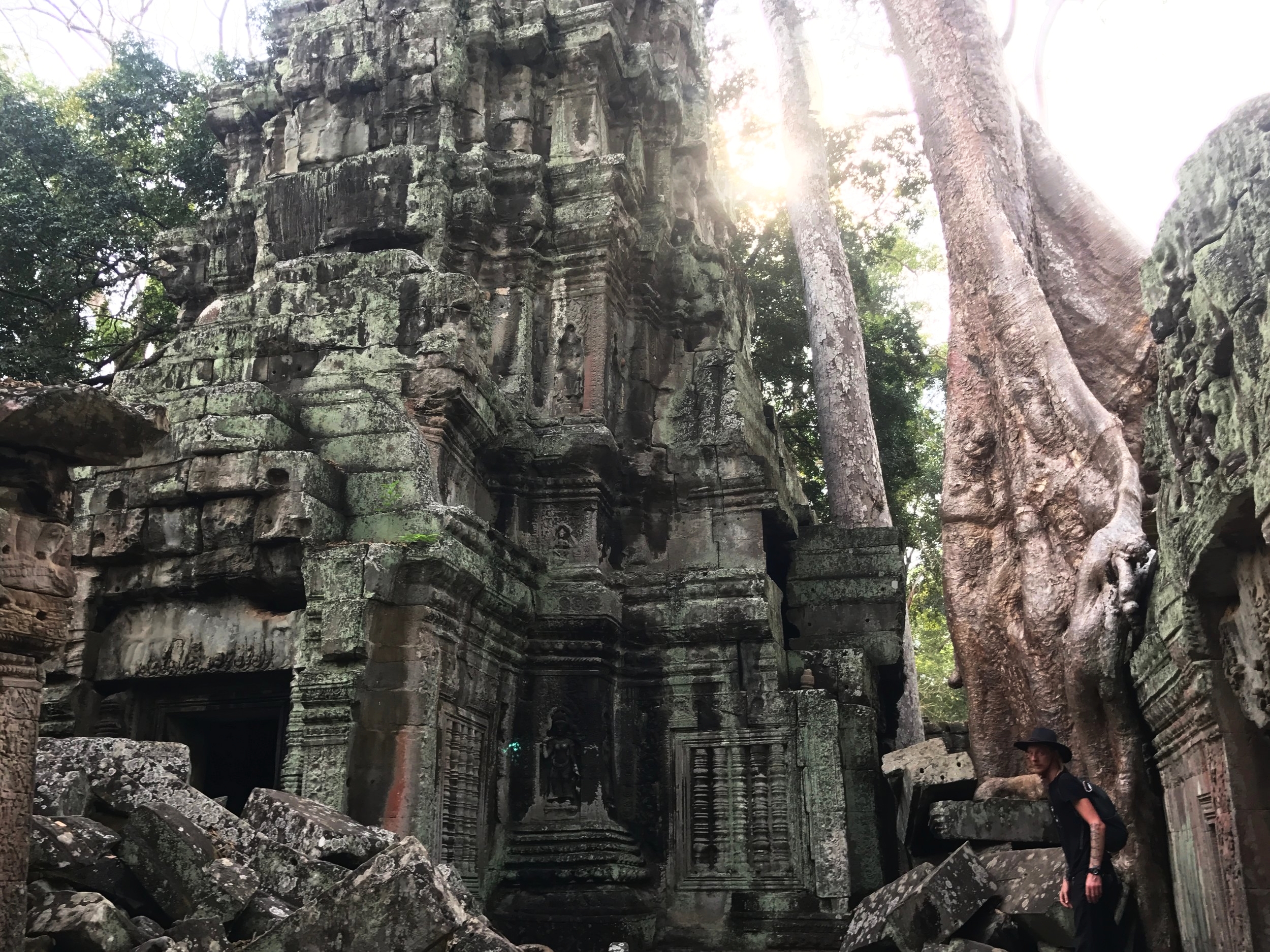Siem Reap
Built from striking red sandstone and lined with intricate and elaborate carvings, Banteay Srei is unlike any other temple in Angkor Wat Archeological Park. Located 16 miles northeast of the main park, visiting Banteay Srei and its surrounding sites is a worthwhile commitment. Beginning at 8AM, the hour long drive on the back of a tuk tuk through the Cambodian countryside was both beautiful and eye opening, revealing at once the country’s picturesque pastoral landscape, and its poverty.
A BRIEF HISTORY OF BANTEAY SREI
Banteay Srei, known colloquially as The Pink Lady Temple, and more simply, The Lady Temple, is a 10th century temple dedicated to the Hindu god Shiva. It is the only major Angkorian temple that was not built by a monarch. The site was ‘rediscovered’ in 1914, and first restored in the 1930’s.
When compared with the rest of the Angkorian sites, which are very large in scale, Banteay Srei’s construction seems miniature; making for a relatively quick visit.
Though widely known as ‘The Lady Temple’, and fabled to have been built by women, the translation of Banteay Srei means ‘citadel of the women’ or ‘citadel of beauty’ likely referring to the delightfully complex carvings and devatas, or female deities, they portray.
Sadly, the temple has suffered a great amount of theft and vandalism since the early 1900s targeted mostly at its statues, causing the Cambodian government to remove some of the statues and replace them with concrete replicas.
BEYOND THE TEMPLE
Being a smaller complex than the other major temples we visited, Banteay Srei felt the most crowded. It’s good to know that tour groups quite literally arrive by the busload at all of the historical sites. Having patience with the crowds is critical, and is how we got many of these shots!
We enjoyed perusing the pink temple and marveling at the incredibly detailed and very well preserved works of art that still line its walls today.
After our tour, we sat down to listen to The Landmine Victims Band (a common sight in tourist sections of Siem Reap), which played traditional tunes. One man even used a leaf as a kazoo!
We then strolled the grounds surrounding the temple, which led to a broad and secluded open field. On our way back, we encountered two young girls attempting to sell us various items. When we politely refused, one tried to snatch something out of Chadley’s pocket. Though this was the first and only time we faced potential theft along our travels, it is a cautionary tale. As a general rule, visitors are discouraged from buying wares from children, as this practice perpetuates systemic poverty.
Good to Know: While renting a tuk tuk and driver to motor us around the main Archeological Park was only $20 a day, trekking out to Banteay Srei and the surrounding area cost double. Though $40 for such a day trip is pretty standard (you can always try to negotiate for a lesser rate), we did not have the foresight to discuss the day’s cost with our driver in advance. Nor did our driver reveal the steep price hike until the morning of, when he approached us with a few other drivers to inform us of the price increase. Blindsided, we reluctantly agreed, which put a damper on the morning and our relationship with the driver, to say the least. Though we felt initially swindled, our research later revealed that this wasn't such a bad deal. Regardless, we highly recommend negotiating such things in advance to avoid any confusion.
ENJOY YOUR VISIT!
Banteay Srei’s rosy relics offer something different from the rest of Angkor Wat, revealing a side of Khmer art and culture that cannot be seen anywhere else.





































































































